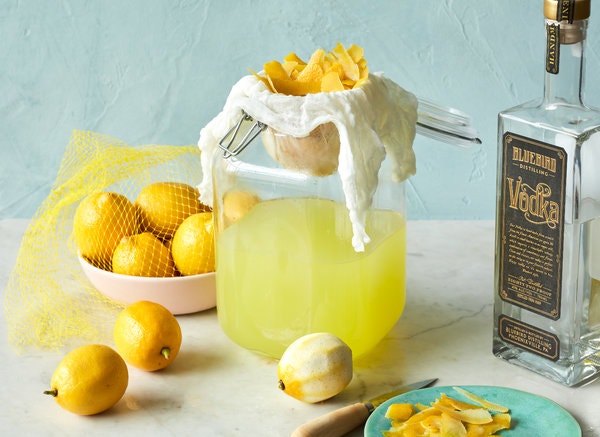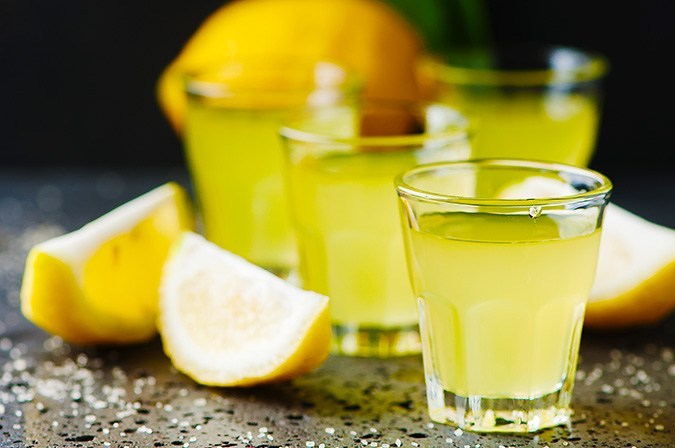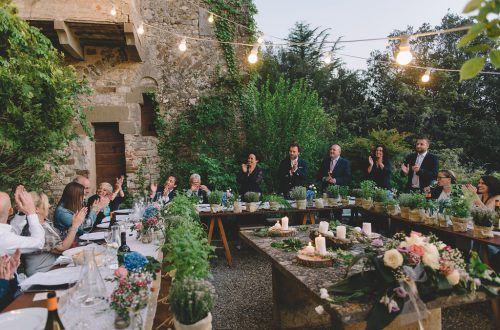
Summer is the Season for Limoncello
Limoncello is a vibrantly colored digestif that goes down easy on a hot summer’s day. Although the sweet liqueur is most often served, chilled, in a shot glass, it is meant to be sipped slowly after your meal. And although easy to make, limoncello has a complicated — and contested — history. Some people believe that Italian monks first made the spirit as early as the Middle Ages; others credit Southern Italian fishermen who were thought to drink it upon returning to shore to warm themselves and fight off colds. But most accounts attribute its creation to Maria Antonia Farace, who reportedly lived on a small island off Italy’s southern coast in the early 1900s. One of Farace’s descendants registered a small limoncello brand with Federvini, an Italian trade group, in 1988, using her original recipe.

You can use any kind of organic lemon to make your own limoncello. (You’ll want to avoid fruit that has been treated with pesticides or other unwanted chemicals, since you’ll be using the lemon peels to make the elixir.) Note that the spirit needs to sit for at least two weeks before you indulge in a cool glass.
You can also experiment with using other citrus fruits: By following the same process, you can make ’cellos from limes, grapefruits, oranges — the list goes on. Whatever you decide to use, you’ll have a lot of leftover of peeled fruit, and that provides its own culinary opportunities. You could squeeze your lemons into a lemonade or stick with the Italian theme and make granita, a Sicilian water ice. The following recipe is one that has been perfected for years, and is based on different formulas and notes. Salute!
Ingredients
3 cups 100 proof vodka (the higher quality, the smoother your ’cello will be)
1 cup 190 proof Everclear
12-18 lemons (the more lemons you use, the stronger your lemon flavor will be)
2 cups white sugar
Yield: About two and a half 750 ml bottles
Steps
Get the most from your lemons
- Pour the vodka and Everclear into a large mason jar.
- Using a very sharp vegetable peeler, remove the peels of your lemons. Take care to avoid any pith on your peels. The thinner your peels,
the better. (You can remove any piths from your peels using a small spoon or paring knife.) - Add the peels to the alcohol mixture, and make sure they are fully submerged. Seal and allow to sit in a cool place for at least five days
and up to a month. The longer you let this mixture sit, the stronger the lemon flavor will be.
Making the simple syrup
- In a saucepan over medium heat, simmer equal parts sugar and water (2 cups each).
- Allow the mixture to simmer for an additional five to eight minutes and let cool.
- Seal in a glass container and store.
Straining your solution
- Once your alcohol and lemon peel mixture has sat for at least five days, remove the lemon peels by straining them through cheesecloth
and a conical sieve, and save the solution. - Keep the lemon peels in the cheesecloth and use your hands to squeeze any excess liquid from the peels.
- Repeat the straining process until the solution is clear and all particles are removed.
Getting it just right…
- In small increments, add the simple syrup to your alcoholic mixture. Mix well before adding more simple syrup and taste. (Add too much sugar and you’ll dilute the citrus taste; add too little and the lemon will be overpowering.)
- If the alcohol level is too overwhelming, add a small amount of water (¼ cup) and mix well. Taste after each adjustment. Once your spirit tastes to your liking, store in the fridge overnight and taste again.
- If you’re satisfied with your limoncello, seal and store in the freezer for at least one week before serving.



